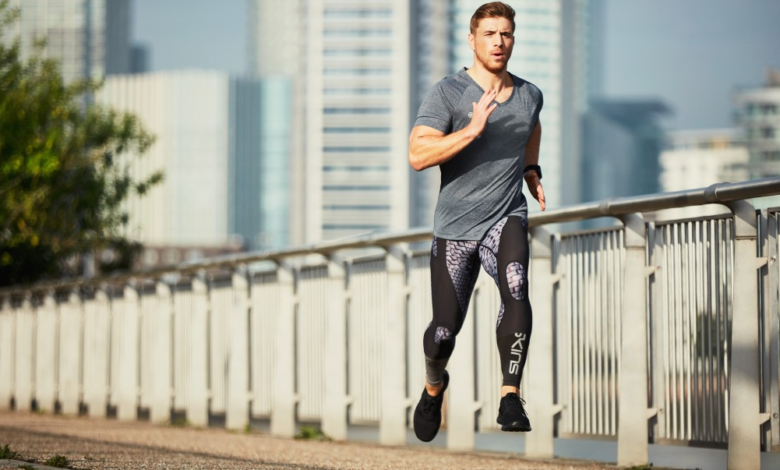Benefits of Compression Clothing for Work

Benefits of Compression Clothing for Work. Compression clothing has gained popularity in the fitness world for its ability to enhance performance, improve circulation, and aid in recovery. But did you know that it can also be beneficial in a work environment? Whether you have a physically demanding job or sit at a desk for hours, compression clothing offers several advantages that can improve your comfort and well-being. In this article, we’ll explore the key benefits of wearing compression clothing for work and why it might be a game-changer for your daily routine.
2. Improved Blood Circulation
One of the primary benefits of compression clothing is its ability to promote better blood flow. Compression garments are designed to apply gentle pressure to your muscles, which helps improve circulation by pushing blood back toward the heart. This is particularly useful for those who spend long hours sitting or standing, as it helps prevent blood pooling in the legs and reduces the risk of conditions like deep vein thrombosis (DVT).
Why Better Circulation is Important at Work
- Reduces fatigue: By improving blood flow, compression clothing can help prevent the feeling of tired, heavy legs, which is common after long periods of sitting or standing.
- Prevents swelling: Compression garments help reduce swelling in the feet and ankles by promoting better circulation, making them ideal for jobs where you’re on your feet all day.
- Boosts energy levels: Improved circulation means your muscles get more oxygen and nutrients, which can enhance your energy levels and productivity.
3. Enhanced Muscle Support and Reduced Fatigue
Whether you work in construction, healthcare, or an office, your muscles are constantly being used, and fatigue can set in quickly. Compression clothing provides extra support to your muscles, reducing vibrations and micro-tears that can occur with movement. This can help delay the onset of muscle fatigue, keeping you feeling fresher throughout the day.
How Compression Helps with Muscle Fatigue
- Decreases muscle soreness: Compression garments help reduce the strain on your muscles, which can lead to less post-work muscle soreness, especially after physically demanding tasks.
- Supports recovery: Wearing compression clothing during or after work can aid in muscle recovery, helping you bounce back faster and be ready for the next day.
- Improves posture: Some compression garments, like tops and vests, offer postural support by keeping your shoulders aligned and your core engaged, which can reduce back pain and discomfort.
4. Increased Comfort and Mobility
Compression clothing is designed to be snug but flexible, allowing for a full range of motion. This makes it an excellent choice for workers who need to move around freely or lift heavy objects. Additionally, compression garments are often made with moisture-wicking materials, which help keep you dry and comfortable, even during long shifts.
Why Comfort Matters in the Workplace
- Prevents chafing and irritation: The snug fit of compression clothing minimizes friction, reducing the risk of chafing, which is particularly helpful for people who walk or move a lot during work.
- Keeps you cool and dry: Compression garments are often made with breathable, moisture-wicking fabrics that keep sweat away from the skin, helping you stay cool and comfortable, especially in warm environments.
- Allows freedom of movement: Despite their tight fit, compression garments are designed to move with your body, ensuring that you can bend, stretch, and lift without restriction.
5. Better Posture and Core Stability
Many types of compression clothing, such as compression tops and back braces, offer postural support, which can be especially helpful for those who sit for long periods or have jobs that require heavy lifting. By providing gentle pressure to your core and lower back, these garments help improve alignment and posture.
How Better Posture Benefits You at Work
- Reduces back pain: Compression garments support your back muscles, helping to maintain proper alignment and reduce strain, which can alleviate or prevent back pain, especially for desk workers or those who lift frequently.
- Enhances balance and stability: By supporting your core muscles, compression clothing can improve your balance, which is especially useful in physically demanding jobs where stability is key.
6. Injury Prevention
For those working in environments where injuries are a risk—whether from repetitive strain or heavy lifting—compression clothing can offer an extra layer of protection. By stabilizing muscles and joints, it can help reduce the likelihood of strains, sprains, and other common workplace injuries.
Why Compression is Effective for Injury Prevention
- Reduces muscle oscillation: Compression clothing reduces the vibrations and movement in your muscles, helping to prevent small injuries that can build up over time.
- Provides joint support: Compression garments can help stabilize joints like knees and ankles, offering additional support during movements that require heavy lifting or constant standing.
- Speeds up recovery after minor injuries: If you do suffer from a mild strain or sprain, wearing compression garments during recovery can help reduce swelling and improve blood flow, speeding up the healing process.
7. Conclusion
Incorporating compression clothing into your work wardrobe can offer a range of benefits, from improved circulation and reduced fatigue to better posture and injury prevention. Whether you have a physically demanding job or spend most of your day sitting, compression garments can enhance your comfort, support your muscles, and keep you feeling energized throughout the day. With their ability to boost performance and aid recovery, they’re more than just a fitness tool—they’re a valuable addition to your work routine.
FAQs
1. Can I wear compression clothing all day at work.
2. Is compression clothing suitable for office jobs?
Absolutely! Compression socks, for example, are great for those who sit for long periods as they improve circulation and reduce the risk of swelling.
3. Can compression garments help with back pain?
Yes, certain types of compression clothing, like compression shirts or braces, provide postural support that can reduce strain on your back muscles, helping to alleviate pain.
4. Do compression garments prevent injuries?
While they can’t completely prevent injuries, compression clothing helps stabilize muscles and joints, reducing the risk of strains and sprains during physical activities.
5. Are there different types of compression clothing for different jobs?
Yes, there are various types of compression garments available, from compression socks for standing jobs to full-body suits for more physically demanding tasks. Choose the one that fits your specific needs!
